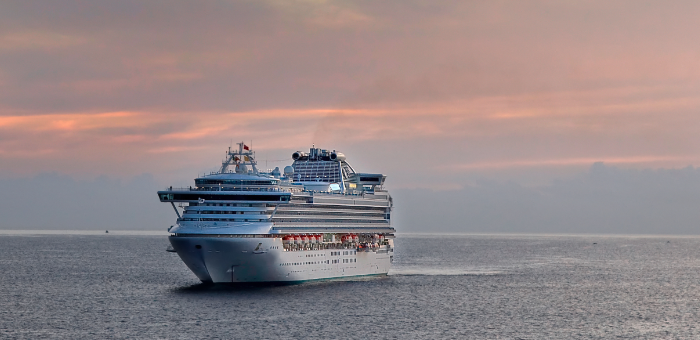France/USA-based aqua-tools said that cruise ships and ferry operators must do more to protect passengers from contracting Legionella and other infections from waterborne pathogens.
Namely, a research paper published in June 2017 by the US National Institutes of Health’s National Library of Medicine, called: ‘Legionella Risk Assessment in Cruiseships and Ferries’, found high levels of Legionella contamination in local ferries and cruise ships.
[smlsubform prepend=”GET THE SAFETY4SEA IN YOUR INBOX!” showname=false emailtxt=”” emailholder=”Enter your email address” showsubmit=true submittxt=”Submit” jsthanks=false thankyou=”Thank you for subscribing to our mailing list”]
Researchers evaluated Legionella contamination on 10 ferries and six cruise ships in the Port of Messina, Sicily. From the water and air samples tested, the researchers discovered that Legionella pneumophila sg1 was present in samples of shower and tap water in 70% of the 10 ferries examined, and in 33% of the six cruise ships examined.
They also found Legionella pneumophila sg 2-14 in 80% and 16.7% of these ships, respectively. However, despite the fact that no Legionella contamination was found in whirlpool baths, air and ice samples, they mentioned that:
Data confirmed higher levels of Legionella contamination in local ferries and cruise ships, underlining the need to adopt corrective actions more specific for these smaller vessels.
Concerned with these results, aqua-tools’ CEO Marc Raymond noted that despite the new ships have done more to prevent Legionella, the same does not apply to smaller and older ships which, in many cases, are not well maintained.
Mr. Raymond added that while the Norovirus is still the main cause of infection onboard passenger ships, Legionnaires disease, Pontiac fever and other infections from waterborne pathogens can be fatal.
Initial symptoms of Legionella usually include flu-like symptoms such as headaches, muscle pain and fever, with symptoms of pneumonia once bacteria begin to infect the lungs. There are different degrees of Legionella: the worst can cause death but there is a lesser known form called Pontiac, which can often be misdiagnosed as flu and can only be accurately verified by having a urine test. While the Pontiac strain is like a severe five-day flu for fit people, it can be worse for older people or those with breathing difficulties.
The disease, which isn’t contagious and can’t be spread directly from person-to-person, is usually caught by breathing-in small droplets of contaminated water, usually in showers – it’s transmitted by an air-borne mist and can develop in still water between 20°C and 50°C. It can also lie dormant in otherwise ‘safe’ water systems for years, protecting itself in other matter available in the water system biofilm. It is therefore important that water supplies are kept below 20°C for cold water and 50°C for the hot supply.
As John Chillingworth, a former chief engineer on Cunard Line’s QE2 liner and marine technical manager informed, this all reinforces the need for a thorough Legionella risk assessment to be included as part of a preventative ship repair and maintenance programme and yards should be alerted to any potential risks before a vessel arrives in dock. A proper Water Safety Plan (WSP), as recommended by WHO Water Safety Guidelines, should be implemented and based on an individual vessel risk assessment, and not, as is usually the case, a generic set of broad guidelines. This must also be ‘owned’ by the vessel’s management.
We also need to see more public, scientific and medical awareness around the causes and symptoms of Legionella infection to improve reporting and compile accurate statistics.
Mr. Chillingworth concluded.






























































